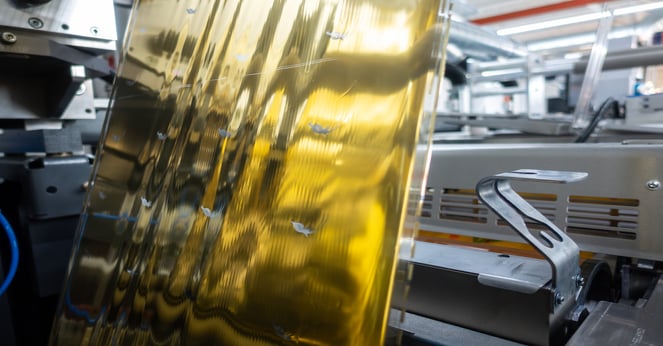
Have you ever seen printed materials with some kind of raised surface? Those are most likely products of tactile printing. Also called dimensional printing, tactile printing creates visually striking outputs while adding a touch-related dimension.
In recent years, businesses and other types of organizations that want their materials to make a greater impact are increasingly recognizing the value of this type of printing. It engages the senses and promotes a deeper connection with the audience.
The versatility of tactile printing goes beyond traditional media, finding new applications in polypropylene printing and initiating a revolution in printed polyester fabric. It enriches people’s tactile experience on different substrates like paper, plastic films, and rigid plastics. Tactile printing involves techniques like embossing, pressing, plating, layering of inks, or using special papers designed to expand selectively, creating distinct textures.
The Dynamics of Tactile Printing with Printed Polyester Fabric
This type of printing has become a revolutionary method for improving the sensory experience of visually impaired people. Printed polyester fabric is now widely recognized for its role in creating inclusive and accessible materials for businesses and organizations.
Printed polyester fabric has become popular as an all-around substrate due to its printing applications. Its inherent properties make it an ideal canvas for dimensional printing, enabling a balance between durability, flexibility, and tactile responsiveness. Printing on polyester fabrics opens new avenues for creating dynamic and engaging tactile graphics.
The combination of print polyester fabric and polypropylene printing techniques creates intricate tactile graphics with remarkable sturdiness and longevity. This approach makes tactile prints last longer, making them suitable for various industry applications.
Polypropylene printing is a complementary technique that expands its printing repertoire. The combination of printed polyester fabric and polypropylene printing enables the production of robust and tactile materials, ensuring longevity and resilience in diverse applications.
Businesses planning to invest in tactile printers will find that the technology has evolved to provide unprecedented precision in the application of textures. Contemporary tactile printers feature enhanced capabilities, enabling organizations to craft tactile graphics with meticulous detail.
Tactile Printing in Key Industries
In the fashion and textile industry, printing on polyester fabrics allows for the creation of intricate textures that upgrade the aesthetic appeal of clothing and accessories. Whether it’s a subtle embossed pattern on a dress or a tactile graphic on a handbag, printing on polyester fabrics adds a touch of elegance and uniqueness to fashion items.
Polypropylene, a widely used thermoplastic polymer, benefits from tactile printing by adding a distinctive touch to packaging materials, signage, and promotional items. This not only imbues packaging with a premium feel but also serves as a practical solution for industries requiring robust and long-lasting printed materials.
In accessibility-focused applications—such as education and communication for the visually impaired—the use of tactile graphic printers is gaining momentum. Using specialized techniques, these printers produce graphics with raised surfaces for tactile exploration of images and diagrams.
Technological Advancements Driving Tactile Printing Innovation
One of the key drivers behind the growth of tactile printing is the advent of advanced printing technologies. High-resolution digital printing for printed polyester fabric has opened up new possibilities because intricate and precise tactile patterns can now be applied to substrates. This has expanded its printing scope beyond traditional methods, making more complex and detailed textures possible.
In addition, 3D printing technology has emerged as a game-changer in the printing landscape. This revolutionary technology allows for the creation of three-dimensional objects layer by layer, offering unparalleled flexibility in designing and producing tactile surfaces. As a result, it enables users to achieve a level of realism and intricacy that was previously unattainable.
Smart materials, such as conductive inks and shape-memory polymers, can be incorporated into the printing process to add interactive and dynamic elements to the tactile experience. This opens up possibilities for creating tactile prints that respond to touch, temperature, or other environmental stimuli, enhancing the overall sensory impact.
Strategies for Businesses to Leverage Tactile Printing
Tapping into the sensory experience through textures and raised printing can substantially boost the impact of printed materials. Tactile printing is a powerful storytelling tool for companies to communicate their values, quality, and uniqueness in a way that transcends traditional visual communication.
If your organization is planning on acquiring tactile printers, consider SumnerOne as your provider. We offer comprehensive printing solutions with toner devices that can print on polyester and polypropylene. Our commitment to innovation extends to device printers capable of producing clear prints on transparent film, which add another dimension to printing possibilities.
Get in touch with our team and find out how we can support your organization’s tactile printing activities.
 FREE EBOOK DOWNLOAD
FREE EBOOK DOWNLOAD



